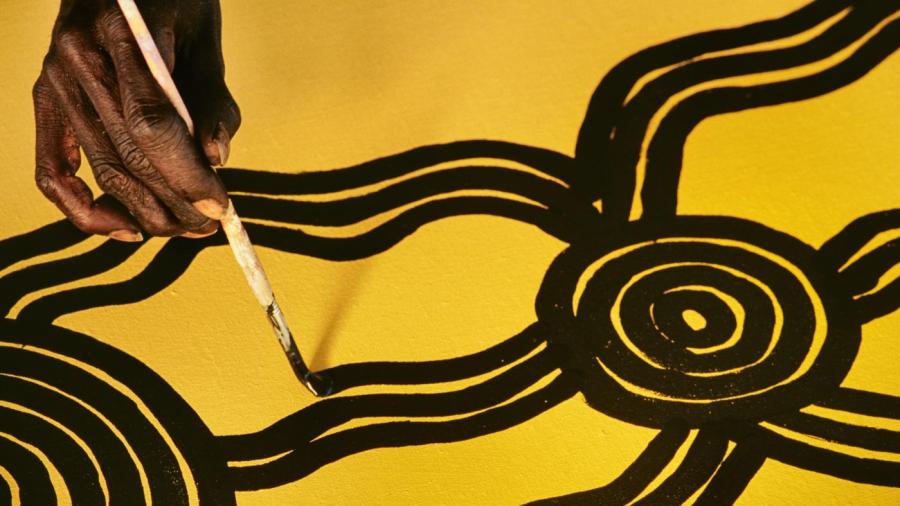What Materials Are Used to Produce Aboriginal Art?

According to Aboriginal Art Online, the most traditional painting material used by Aboriginal peoples was ochre. Mined from various sites, ochre is a rock that varies in texture from crumbly to firm. It gets its color from iron oxide. Other common supplies used to add pigment to paintings include clay, charcoal and mixtures of blood, fats, feathers and other organic materials.
Aboriginal Art Online states that ochre was traded extensively throughout Australia in ancient times, providing colors ranging from a light yellow to a very dark brown. Ochre and other pigments were applied to canvases by blowing them from the mouth onto stencils, using a fine or frayed stick, or by hand. Ochre was also used in the mortuary practices of some ancient Aboriginal peoples, who applied the pigments to the bones of the deceased person before placing them in a log coffin.
The surfaces for Aboriginal paintings varied by region based on which mediums were available in a particular area, according to Aboriginal Art Online. Rocks, wood, bark and the skin of participants in ceremonies were the most popular choices for canvases on which to paint. Orchid sap and the yolks of turtle eggs were commonly used to bind the pigments to the canvas.





